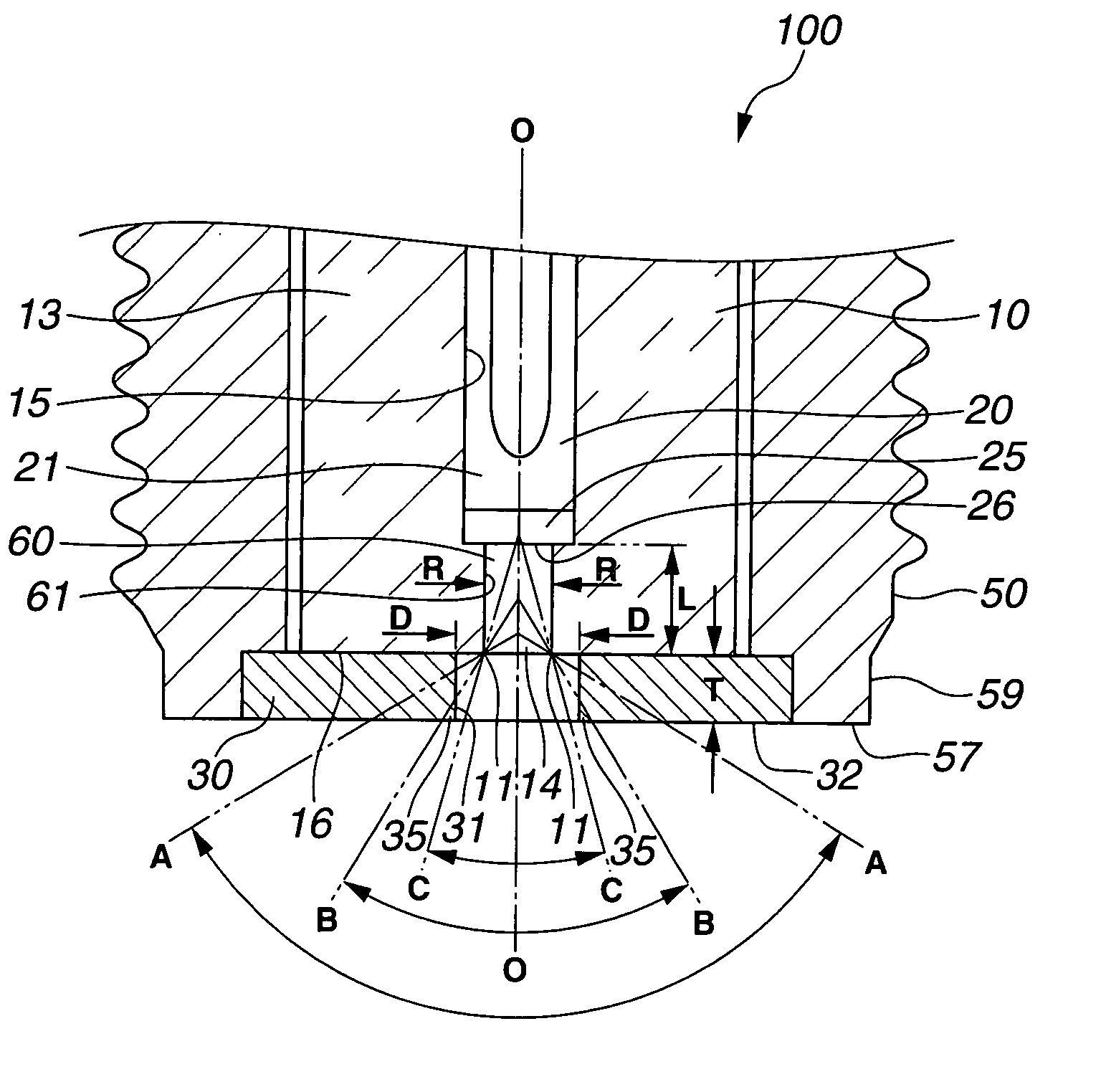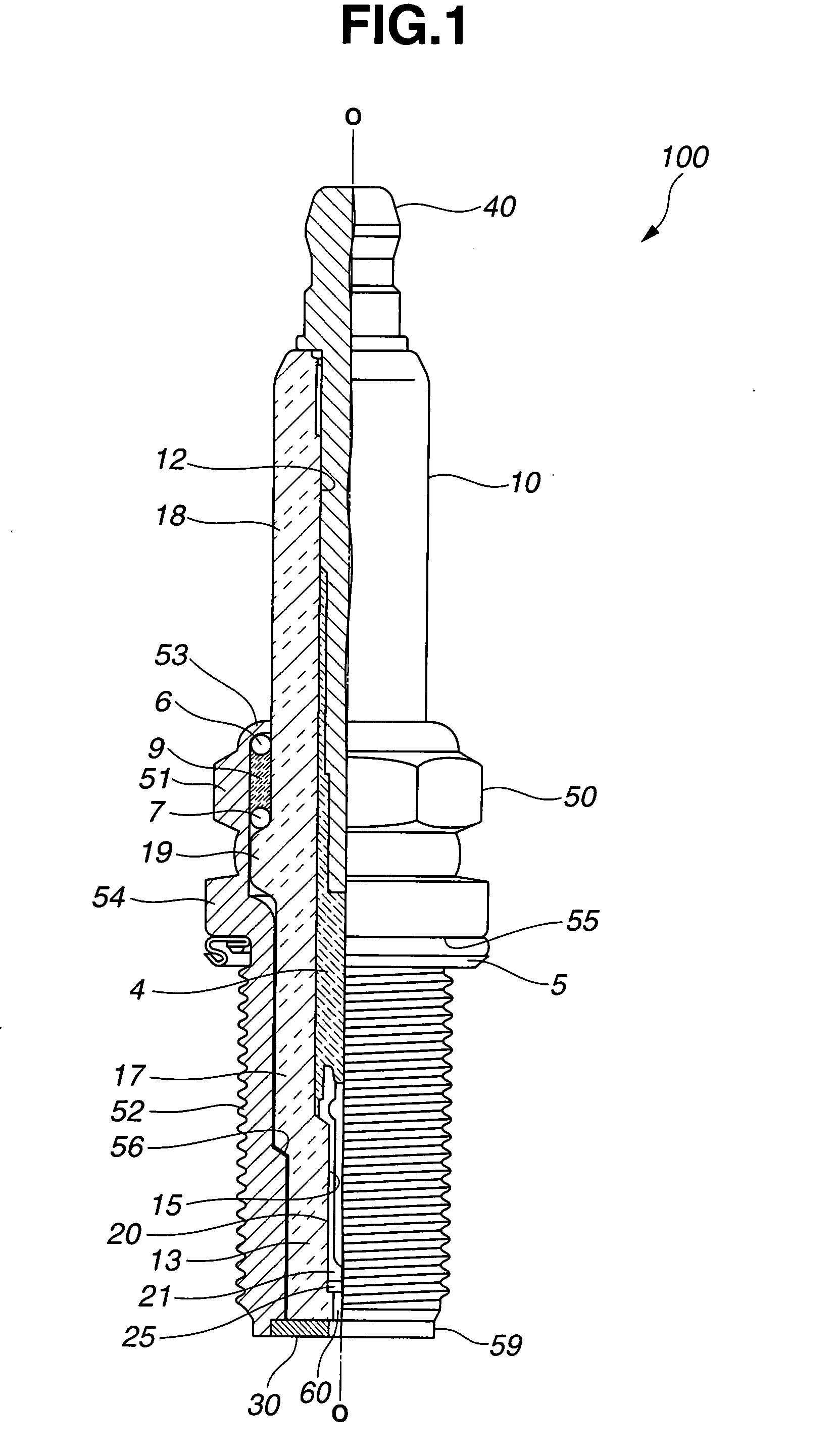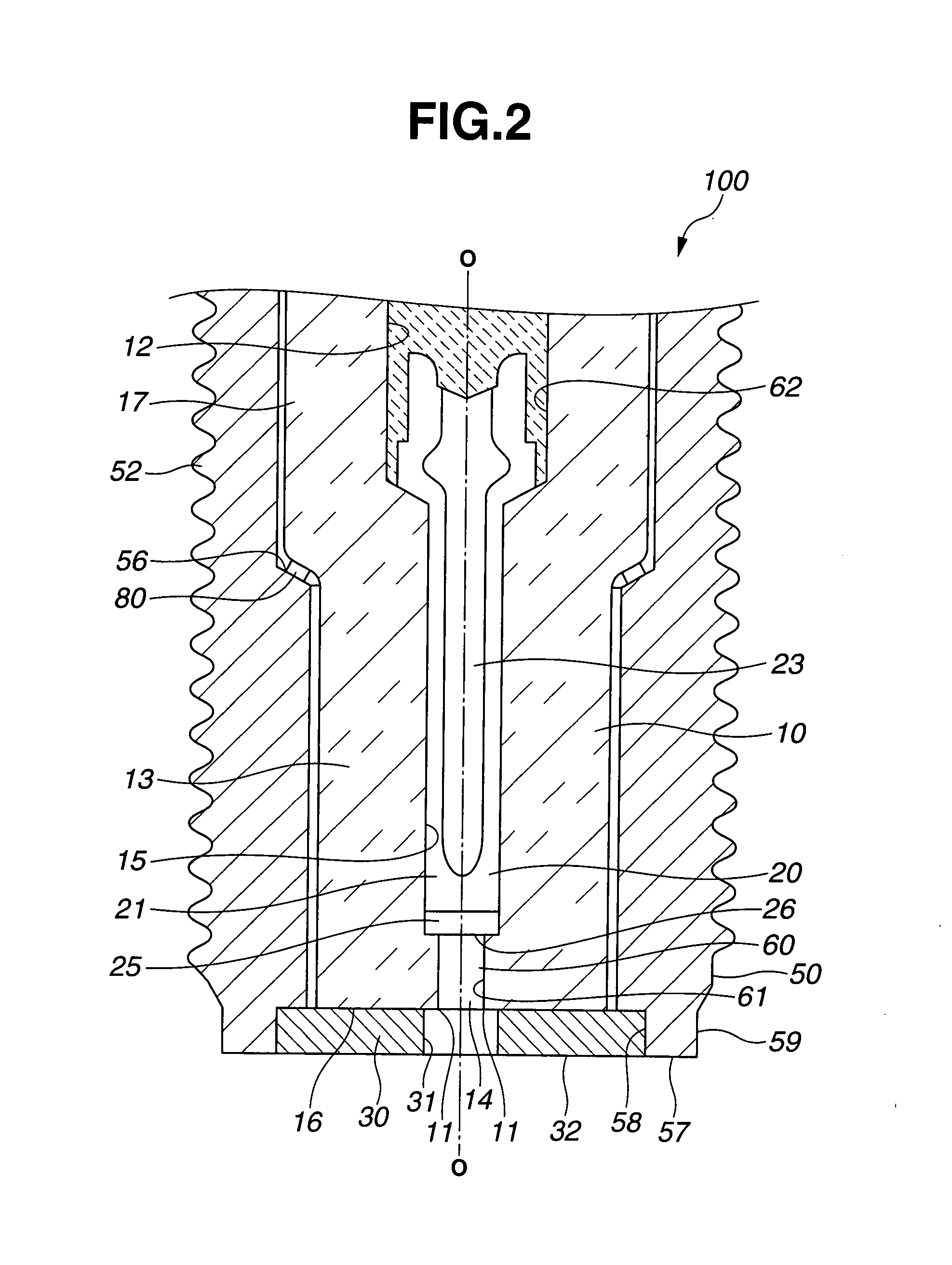Plasma-jet spark plug and ignition system
a technology of spark plugs and plasma jets, which is applied in the direction of spark plugs, instruments, machines/engines, etc., can solve the problems of deterioration of electrode durability, adverse influences, and increase of plasma ejection length, so as to achieve maximum ignition performance and improve ignitability
- Summary
- Abstract
- Description
- Claims
- Application Information
AI Technical Summary
Benefits of technology
Problems solved by technology
Method used
Image
Examples
experiment 1
[0054]A test sample of the spark plug 100 was produced with the following dimensions: D=1.0 mm, T=1.0 mm, R=0.5 mm and L=2.0 mm where D was the minimum diameter of the opening 31 of the ground electrode 30; T was the axial thickness of the ground electrode 30; R was the diameter of the discharge cavity 60 (the diameter of the insulator opening 14 at the front opening edge 11); and L was the depth of the discharge cavity 60 (the distance between the front end face 16 of the ceramic insulator 10 and the front end face 26 of the center electrode 20 along the plug axis direction). The test sample was then subjected to ignitability test. The ignitability test was conducted by mounting the test sample in a pressure chamber, charging the chamber with a mixture of air and C3H8 fuel gas (air-fuel ratio: 22) to a pressure of 0.05 MPa, activating the test sample by means of a CDI-circuit power source and monitoring the pressure in the chamber with a pressure sensor to judge the success or fail...
experiment 2
[0055]Test samples of the spark plug 100 were produced in the same manner as in Experiment 1 and subjected to durability test. In each of the test samples, the ground electrode 30 was made of Ir-5Pt alloy. The durability test was conducted by charging a pressure chamber with N2 gas to a pressure of 0.4 MPa, mounting the test sample in the pressure chamber, activating the test sample by means of a CDI-circuit power source to cause a continuous discharge at 60 Hz for 200 hours and measuring the amount of consumption of the ground electrode 30 during the continuous discharge. The output of the power source was varied from sample to sample. The test results are indicated in FIG. 7. The test sample had an electrode consumption of about 0.06 mm3 by the energy supply of 100 mJ. The test sample had an electrode consumption of about 0.08 mm3 by the energy supply of 150 mJ. Further, the test sample had an electrode consumption of slightly less than 0.10 mm3 by the energy supply of 200 mJ. The...
experiment 3
[0056]Three test samples of the spark plug 100 were produced with the following dimensions: T=1.0 mm, R=0.5 mm and L=2.0 mm. In these three test samples, the opening 31 of the ground electrode 30 was formed in such a manner that the opening defining portion of the ground electrode 30 was in contact with an imaginary circular surface line having a vertex angle of 110°, 115° and 120°. A test sample of comparative spark plug was produced under the same conditions as above except that the opening defining portion of the ground electrode was in contact with an imaginary circular conical surface line having a vertex angle of 125°. Each of the test samples was then subjected to discharge test. The discharge test was conducted by charging a pressure chamber with N2 gas to a pressure of 0.4 MPa, mounting the test sample in the pressure chamber and activating the test sample by means of a power source of 140-mJ capacity to measure a discharge voltage required for the test sample to cause a co...
PUM
 Login to View More
Login to View More Abstract
Description
Claims
Application Information
 Login to View More
Login to View More - R&D
- Intellectual Property
- Life Sciences
- Materials
- Tech Scout
- Unparalleled Data Quality
- Higher Quality Content
- 60% Fewer Hallucinations
Browse by: Latest US Patents, China's latest patents, Technical Efficacy Thesaurus, Application Domain, Technology Topic, Popular Technical Reports.
© 2025 PatSnap. All rights reserved.Legal|Privacy policy|Modern Slavery Act Transparency Statement|Sitemap|About US| Contact US: help@patsnap.com



